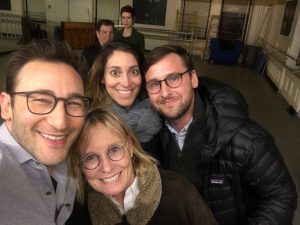This is a summary post on my series about Finding Your WHY. Based on Simon Sinek’s work, your WHY is what gives you purpose and meaning regardless of age or stage of life. Your WHY can add passion to your life and help you prioritize by aligning activities on purpose.
NOTE: Watch for my monthly podcast Becoming a Sage this Friday, March 9th. This series is based on my interviews with thought leaders about positive aging and how to live life with passion and on purpose. I hope you can find time to listen to the wisdom being shared.
This is a summary to a three part series on Finding Your Why. In Part 1, I described how most people know what they do and how they do it, but they often can’t explain why they do it. Understanding your WHY is important for us at all ages and stages because it is our purpose that gives us meaning and meaning matters.
Part 2 included some basic steps to start drafting a WHY statement:
Step 1: Gather stories and share them.
Step 2: Identify themes.
Step 3: Draft and refine a WHY statement.
I shared how I changed my personal mission statement to reflect Sinek’s advice for forming a WHY statement.
To draft a WHY statement, Sinek uses this formula that sounds simple, but is based on inner work and testing draft statements with others:
TO ___________(Contribution to others) so that _______________ (Impact on others).
My WHY statement is:
“To help people lead their best life so the rest of life can be the best of life.”
In Part 3, I shared my process of drafting this statement including the stories and people who have shaped who I am, how I want to contribute, and the impact I want to make.
Sinek summarizes his concepts by saying:
“Our WHY is our purpose, cause, or belief–the driving force behind everything we do. Our HOWs are the actions we take when we are at our natural best to bring our WHY to life. Our WHATs are the tangible manifestation of our WHY, the actual work we do every day.”
Sinek says we can use our HOWs as a filter. He reminds us that HOWs are not aspirational. They do not reflect who we want to be. They express the ways we really behave–the things we actually do.
I like how Sinek differentiates between HOWs and core values that are often talked about or posted on walls in corporate offices. “Values are not, in and of themselves, actions. ‘Courtesy’ is a value. But ‘Treat people with kindness and respect’ is a HOW.”
He continues to say: “If we expect people to live the core values of an organization, we have to be able to tell them what those values look like in action. In other words, HOWs must be simple and actionable.” This is true with a vision statement also. People should be able to “see” what the vision looks like so they understand how the pieces fit together and can move in that direction.
Sinek also advises to not use “Be” verbs in stating your HOWs and to take the “ing” off of verbs. One example he uses is notice the difference between “Be positive” and “Find the positive in everything.” You can feel the difference and the second is more directive and actionable.
Finding your WHY is another way of saying it is critical to find a purpose in order to live life with meaning. As one of my role models, Richard Leider, likes to say: “What is your reason for getting up in the morning?” And if you don’t have one, that is a problem. Leider’s book The Power of Purpose is a classic, but my favorite book of his is titled Claiming Your Place at the Fire: Living the Second Half of Life on Purpose.
Do you have a reason to get up in the morning?
Have you drafted your WHY statement?
If not, when do you plan to do this?
Who might help you with this?
Do you see the value in having a clear WHY statement?
Thanks Simon Sinek for sharing you wisdom. I learned a lot that will serve me well now and into the future in order to help people lead their best life so the rest of life can be the best of life.
 Sign Up and Download Your FREE Copy of The Top 5 Actions For Creating Your Own Breadcrumb Legacy™
Sign Up and Download Your FREE Copy of The Top 5 Actions For Creating Your Own Breadcrumb Legacy™

